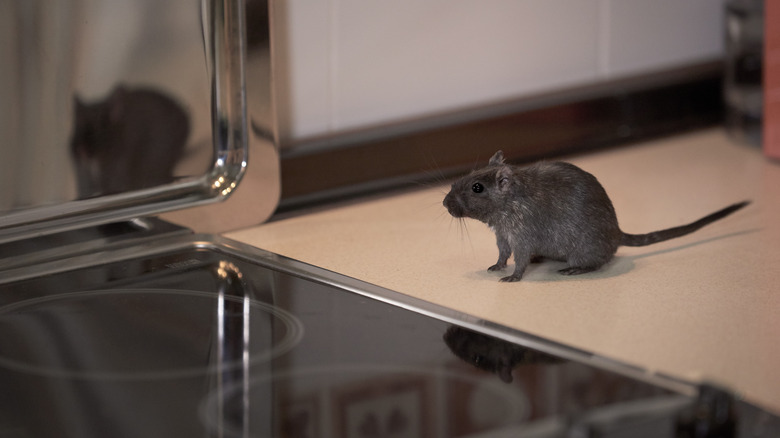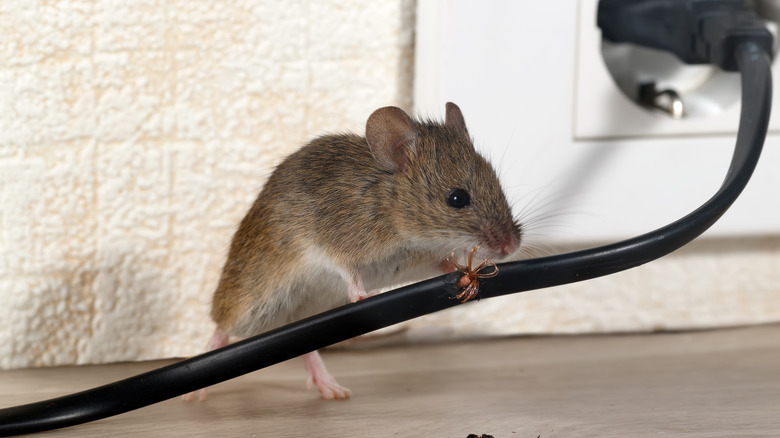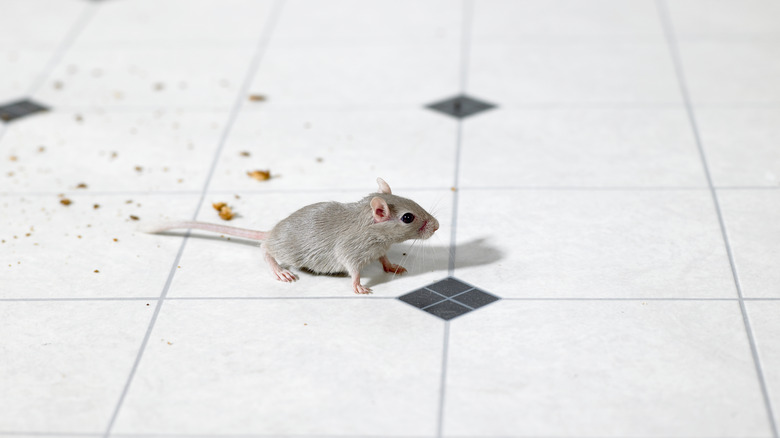The Dangers Of Having Mice Lurking Behind Your Oven
If you see a mouse in your kitchen, you might be tempted to flee in the other direction, pray you don't see it again, and pretend it never happened. But while seeing one mouse doesn't mean a hidden infestation necessarily, it does mean that more may soon be on their way. And beyond startling you, mice also pose a safety risk. While lurking behind your oven, they may chew through wires and create a fire hazard as well as spread disease and draw in insects.
Rodents infest millions of homes every year, per a 2019 survey from the U.S. Census Bureau. Mice in particular can be a pain to get rid of, since they can fit through the tiniest of openings and often outsmart traps. They also breed quickly — you're not imagining things if it feels like a single mouse somehow turned into a whole colony, as female mice can have up to 10 litters annually. Mice are often attracted to the area behind your oven and inside of it. They head there to eat crumbs of leftover food and nest in the hidden warmth of the pilot light. As mice chew wires and leave waste, they become not only a nuisance but also a danger.
Why mice are dangerous when lurking behind ovens
Fun fact about mice: unlike humans, their front teeth never stop growing. To keep them at a manageable length, they grind their teeth and chew on various objects, like your furniture and appliances. Their teeth are strong enough to chew through wood, sheetrock, siding, certain types of metal, and plastic. This constitutes the main danger of mice hanging out behind your oven: they may chew through the wiring, causing the oven to malfunction or short-circuit or even start an electrical fire. Rodent damage may be the actual culprit behind many "mystery" fires with unknown causes. In addition to chewing the wires themselves, mice can also damage gas lines or other oven components or build nests in troublesome areas of the appliance.
Mice also tend to leave a lot of smelly, unsanitary waste behind that can contaminate your food and make you sick. They can also spread several diseases, including typhus and leptospirosis. These rodents may also carry fleas or ticks into your space, which you obviously want to avoid.
How to get rid of mice behind the oven
Needless to say, the best solution to getting rid of mice is to mice-proof your oven before they multiply or cause expensive or permanent damage. Signs that you have mice in or around your oven include droppings, a urine smell, footprints, chew marks, scratching or squeaking noises, or torn-up debris for their nests. If you think you have mice or simply want to take preventative measures, here's what to do to keep mice out of your home.
First, look for any holes that mice may be using to enter from the outside and patch them with caulk or wire mesh. Then make your space as unappealing to them as possible by cleaning your oven until it's sparkling inside and out. Ensure that you frequently sweep behind your oven to get rid of any crumbs as well. The same goes for the rest of your kitchen: keep it spotless and securely seal any food in glass, metal, or thick plastic. Without anything to feed on, mice won't be as enticed to stay. The other important step is to leave traps. A common mistake with mice traps is to put them in the wrong spot. Place them along the paths that mice are already taking regularly, such as the wall behind the oven. If your efforts aren't making progress, don't hesitate to call a professional pest control company for help.


